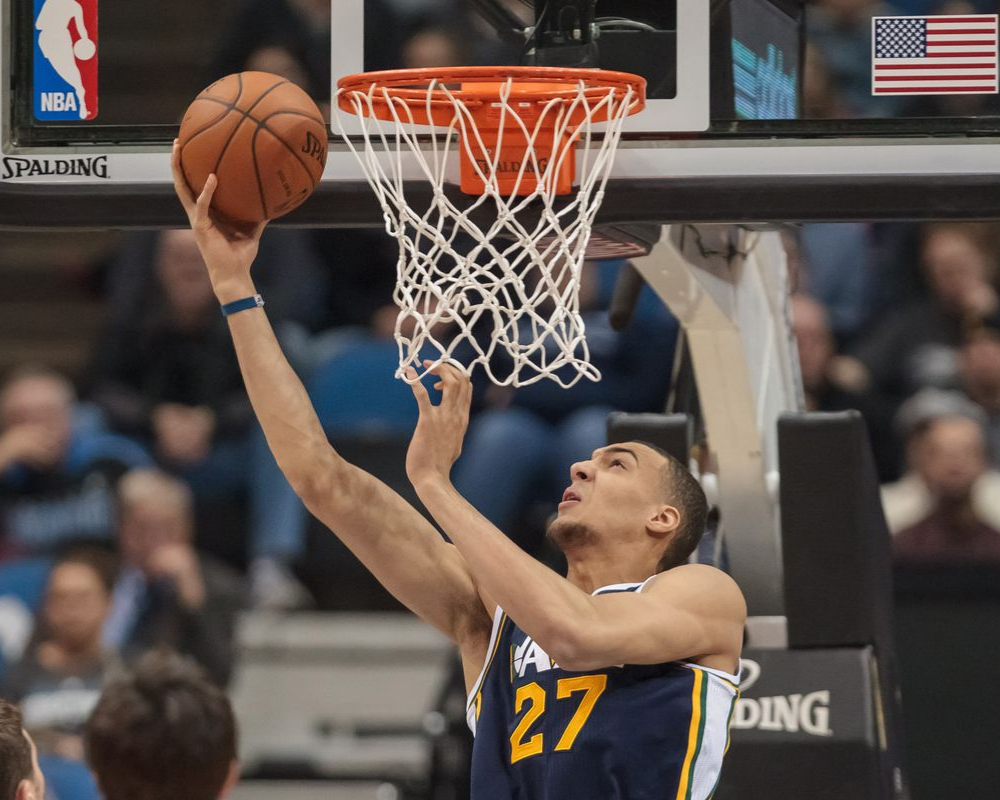Diving into the world of basketball cards, collectors and enthusiasts often wonder which pieces of cardboard treasure hold significant value. From vintage finds to modern-day gems, the spectrum of valuable basketball cards spans decades, capturing the essence of basketball history and its iconic players. In this exploration, we’ll uncover the factors that propel certain basketball cards into the realm of valuable collectibles. Whether you’re a seasoned collector or new to the game, prepare to discover which basketball cards are truly worth the investment.
Vintage Basketball Cards Value
The allure of vintage basketball cards goes beyond mere nostalgia; it represents a tangible piece of sports history that can hold significant financial value. The market for these cards has seen substantial growth, driven by the rarity and condition of specific issues. Among the most coveted are rookie cards of basketball legends, limited edition sets, and those with historical significance tied to iconic moments in the sport. Understanding the factors that contribute to a card’s value—such as demand, scarcity, and condition—is crucial for collectors and investors alike.
Several key eras define the landscape of valuable vintage basketball cards. The early days, particularly the 1940s through the 1960s, introduced the first mainstream basketball cards, with sets like the 1948 Bowman featuring George Mikan being highly sought after. As the sport grew in popularity, so did the production of cards, leading to a boom in the late 1980s and early 1990s. However, it is the cards from before this boom—those that are harder to find in pristine condition—that often carry the most value today. The rarity of high-grade cards from these earlier eras, due to factors such as limited print runs and less sophisticated preservation methods, makes them particularly precious to collectors.
While the intrinsic value of these vintage cards is undeniable, the emotional connection they evoke can be just as significant. Collecting them is not only about the potential financial return but also about owning a piece of basketball history. As the market continues to evolve, the fascination with vintage basketball cards is likely to endure, preserving the legacy of the game’s greatest players and moments for future generations.
- 1948 Bowman George Mikan Rookie Card
- 1957 Topps Bill Russell Rookie Card
- 1961 Fleer Wilt Chamberlain Rookie Card
- 1969 Topps Lew Alcindor (Kareem Abdul-Jabbar) Rookie Card
- 1980 Topps Larry Bird/Magic Johnson Rookie Card
Understanding the Rarity and Value of Basketball Cards
The world of basketball cards is vast and filled with treasures waiting to be discovered. Identifying what makes certain basketball cards worth significant amounts of money involves understanding several key factors. These include the player’s popularity, the card’s condition, rarity, and the year it was issued. Cards featuring legendary players like Michael Jordan, LeBron James, or Kobe Bryant, especially from their rookie years, tend to be highly sought after. The rarity of a card can significantly increase its value, particularly if it was a limited edition or had a restricted print run. Additionally, the condition of the card is paramount; cards graded by professional services such as PSA or Beckett, receiving high scores for their condition, can see their value skyrocket.
Moreover, certain editions and special releases, such as holographic cards, autographed cards, or those that include a piece of the player’s jersey, can also command high prices. The market for basketball cards is dynamic, with values fluctuating based on current trends, player performance, and collector interest. Therefore, staying informed about the market and understanding the historical significance of players and their cards is crucial for collectors looking to find valuable additions to their collections.
Here is a table that highlights some of the factors that contribute to a basketball card’s value:
| Factor | Description | Example |
|---|---|---|
| Player Popularity | The player’s fame and achievements in the sport | Michael Jordan, LeBron James |
| Card Condition | Overall quality and preservation of the card | Graded by PSA or Beckett |
| Rarity | Scarcity of the card’s print run or edition | Limited edition, autographed |
| Year of Issue | The release year of the card, with older generally being more valuable | Rookie year cards |
| Special Features | Unique attributes such as autographs, holograms, or memorabilia | Holographic, jersey piece cards |
Rare Variants and Editions
In the realm of basketball card collecting, rare variants and editions hold a special place. These unique finds often carry significant historical, aesthetic, and monetary value. Among them, limited edition prints, autographed cards, and those from a player’s rookie year are particularly sought after. The rarity of a card is typically determined by its print run, condition, and market demand. Autographed cards of legendary players like Michael Jordan or LeBron James, especially those authenticated by reliable sources, are highly coveted. Furthermore, cards with misprints or errors can also be surprisingly valuable, as their scarcity increases their appeal to collectors.
Editions that feature unique artwork or commemorate significant moments in basketball history are also highly prized. Cards from a player’s rookie season often carry a premium, especially if the player has achieved significant milestones in their career. The condition of the card, graded by professional services, plays a crucial role in its value, with mint condition cards fetching the highest prices. Collectors often seek out these rare variants and editions, hoping to find a piece of basketball history that not only enriches their collection but also serves as a potential investment.
Understanding the rarity and significance of different cards is essential for collectors. Whether it’s a rare variant from a limited print run or a special edition commemorating a historic moment, these cards are the jewels of the collecting world. Their value can be influenced by a wide range of factors, including the player’s popularity, the card’s condition, and the story behind the card. As the market for basketball cards continues to grow, identifying and securing these rare editions becomes both a challenge and a thrill for collectors.
| Card Name | Year | Estimated Value |
|---|---|---|
| Michael Jordan Rookie Card | 1986 | $100,000+ |
| LeBron James Autographed Rookie Card | 2003 | $1,000,000+ |
| Kobe Bryant Limited Edition Card | 1996 | $50,000+ |
| Stephen Curry Rookie Card | 2009 | $20,000+ |
| Shaquille O’Neal Autographed Card | 1992 | $5,000+ |
Understanding the Value of Rarity in Basketball Cards
For collectors, the value of rare variants and editions extends beyond mere monetary worth. These cards often represent significant moments in basketball history, capturing the essence of the game’s evolution and its most iconic figures. Rare cards serve as a bridge between past and present, offering a tangible connection to the legends of the court. Collecting them is not just about the pursuit of value but also about celebrating the rich heritage of basketball. Each rare card tells a story, and for enthusiasts, these stories are priceless. As the market continues to evolve, the hunt for these rare gems becomes increasingly competitive, making each find all the more rewarding.
Condition and Grading Scale
The condition and grading scale of a basketball card are pivotal factors that significantly influence its value. A card’s condition is assessed based on its physical state, including aspects like corners, edges, surface, and centering. The grading scale provides a standardized evaluation method, assigning a numerical value to a card’s condition, which helps collectors and investors determine its worth. The most recognized grading companies in the industry are Professional Sports Authenticator (PSA), Beckett Grading Services (BGS), and Sports Card Guaranty (SGC). Cards graded by these companies often fetch higher prices on the market due to the trust and credibility these companies have established over the years.
For collectors, understanding the nuances of the grading scale is crucial. It ranges from 1 to 10, with 10 being a pristine condition card that’s virtually flawless. A card graded below 3 is considered to be in poor condition, showing significant wear and tear. The difference between a grade of 9 (Mint) and 10 (Gem Mint) might seem minor but can result in substantial differences in value. The grading process also includes a detailed inspection of the card’s authenticity, ensuring that it has not been altered or counterfeited.
Graded cards are encased in tamper-evident, sonically sealed plastic slabs with a label that displays the card’s grade and basic information. This not only helps in preserving the card’s condition but also enhances its display quality. Collectors seeking to maximize their investment or preserve the value of their collections should consider getting their premium cards graded.
| Grade | Description | Impact on Value |
|---|---|---|
| 10 Gem Mint | Perfect condition with no visible flaws. | Highest value. |
| 9 Mint | Minor flaw only detectable under scrutiny. | Significantly high value. |
| 8 NM-MT | Slight imperfections such as minor surface wear. | High value with slight reduction. |
| 6 EX-MT | Some visible surface wear, slightly frayed corners. | Moderate value. |
| 3 VG | Very noticeable wear and tear. | Lower value. |
In the realm of collecting basketball cards, the grading scale serves as a critical tool for assessing a card’s condition and, by extension, its market value. While a card’s rarity and the player it represents play significant roles in determining its worth, the condition, as quantified by its grade, is often the final arbiter. For collectors aiming to sell or insure their collections, or simply to understand their collection’s market standing, a solid grasp of the grading system is indispensable.
Iconic Players and Rookies
The value of basketball cards often hinges on the fame and achievements of the players they feature. Cards depicting iconic players and promising rookies can fetch astronomical prices in the collector’s market. Among these, rookie cards of legends such as Michael Jordan, LeBron James, and Kobe Bryant are particularly prized for their historical significance and investment potential. These cards, especially if kept in pristine condition, are not just pieces of printed cardboard but treasured artifacts capturing the early moments of players who went on to redefine the sport.
The appeal of rookie cards lies in their promise and rarity. When a player achieves superstar status, the demand for their rookie cards skyrockets. However, not all player cards are created equal. The value can be significantly influenced by factors such as the card’s edition, condition, and any special features like autographs or limited print runs. For instance, a LeBron James 2003-2004 rookie card has been known to sell for over a million dollars, a testament to his enduring legacy and the card’s rarity.
Moreover, the advent of grading services has added a layer of authenticity and trust, elevating the prices of high-grade cards even further. Collectors are willing to pay premiums for cards graded by reputable agencies, knowing that the condition and authenticity of the card have been thoroughly vetted.
Further Insights into Iconic Players and Rookies Cards
Exploring deeper into the realm of basketball cards, it becomes apparent that the market is driven by nostalgia, the thrill of the hunt, and the joy of owning a piece of sports history. Cards of players who have had a significant impact on the game, either through their on-court achievements or their contributions to the culture of basketball, hold a special place in the hearts of collectors. This emotional connection can often transcend the actual monetary value of the cards, making the collecting experience richly rewarding.
A Closer Look at Market Influences
In understanding the market for iconic player and rookie cards, one must also consider the broader trends in sports memorabilia. Shifts in consumer interest, the rise of digital collectibles, and changes in the sports landscape can all influence the value and desirability of basketball cards. As such, collectors must stay informed and adaptable, ready to discern the next big trend in the ever-evolving world of sports collectibles.
| Player | Rookie Year | Estimated Value |
|---|---|---|
| Michael Jordan | 1984 | $200,000+ |
| LeBron James | 2003 | $1,000,000+ |
| Kobe Bryant | 1996 | $50,000+ |
| Shaquille O’Neal | 1992 | $5,000+ |
| Stephen Curry | 2009 | $20,000+ |
Market Trends and Demand
The market for basketball cards has witnessed significant fluctuations over the years, driven by various factors including player performance, rarity of the cards, and the overall economic climate. In recent times, we’ve seen a surge in demand for vintage basketball cards, particularly those from the 1980s and 1990s era, which feature legends of the game. This resurgence is partly due to the nostalgia factor and partly because of investors looking for alternative investments.
Another notable trend is the rise of the modern card market, fueled by the entrance of new, young stars into the league. Cards of players like Luka Dončić and Zion Williamson have seen their values skyrocket almost overnight. The phenomenon of “breaking”, where collectors buy into live openings of card packs, has also injected excitement and increased demand within the community. However, it’s important to recognize that market trends can shift, and what’s valuable today might not hold the same worth tomorrow.
With the advent of digital platforms and social media, information dissemination about rare finds and auction results has become more widespread, creating a more informed and competitive landscape. Despite the volatility, the market for basketball cards remains robust, with a solid base of collectors and enthusiasts continually driving demand.
Factors Influencing Basketball Card Values
Several key factors play a crucial role in determining the value of basketball cards. The condition of the card, its rarity, the player’s career achievements, and market timing are all critical components. A card in pristine condition of a universally recognized player like Michael Jordan can fetch sums in the tens of thousands, if not more. Conversely, even a rare card of a lesser-known player may not command as high a price if the demand isn’t there.
- Player performance and career achievements
- Rarity and exclusivity of the card
- Condition and grading of the card
- Market timing and economic factors
- Nostalgia and historical significance
Special Features and Autographs
When delving into the world of basketball cards, collectors and enthusiasts often find that cards with special features and autographs command a higher value in the market. These unique elements not only add a layer of rarity but also a personal touch from the players themselves, making them highly sought after. Autographed cards, in particular, hold a special place, as they carry the player’s signature, directly linking the collector to their favorite athlete. Similarly, cards with special features such as holographic designs, limited edition prints, and unique artwork or imagery also see a significant increase in value. The allure of owning a piece of sports history that includes a direct, personal element from a beloved athlete or a visually stunning card design is what makes these cards truly stand out.
Moreover, the rarity of these cards is often quantified through serial numbering, which indicates the card’s unique position in a limited run. This scarcity, combined with the player’s popularity and career achievements, can drastically affect the card’s market value. For collectors, finding a card that combines these elements—a player of high esteem, a rare autograph, and special features—represents the pinnacle of their collecting journey. It’s a testament to the enduring appeal and dynamic nature of basketball card collecting.
Understanding the Value of Autographs in Basketball Cards
Autographed basketball cards do more than just showcase a player’s signature; they encapsulate a moment in sports history and offer a tangible connection to the athletes who have shaped the game. Collectors often go to great lengths to acquire these pieces, understanding that the value of autographed cards can appreciate over time, especially for hall-of-famers or players who have had a significant impact on the sport. The process of authenticating these signatures adds another layer of value, as verified autographs are much more desirable in the collector’s market.
| Feature | Impact on Value | Examples |
|---|---|---|
| Autographs | Significantly increases | Michael Jordan, LeBron James |
| Holographic Designs | Increases | 1996-97 Topps Chrome Refractors |
| Limited Edition | Increases | Kobe Bryant Black Mamba Edition |
| Serial Numbering | Increases | Steph Curry Panini National Treasures 1/1 |
| Unique Artwork | Varies | Zion Williamson Panini Prizm Art |
In conclusion, the world of basketball cards is rich and varied, with special features and autographs representing the apex of collectible value. For collectors, these cards are not just pieces of printed cardboard; they are mementos of the sports and athletes they admire, investments, and sometimes, treasures with personal significance. Whether it’s the thrill of the hunt, the joy of ownership, or the potential for future value, the pursuit of these special cards continues to captivate and engage the basketball card collecting community.











